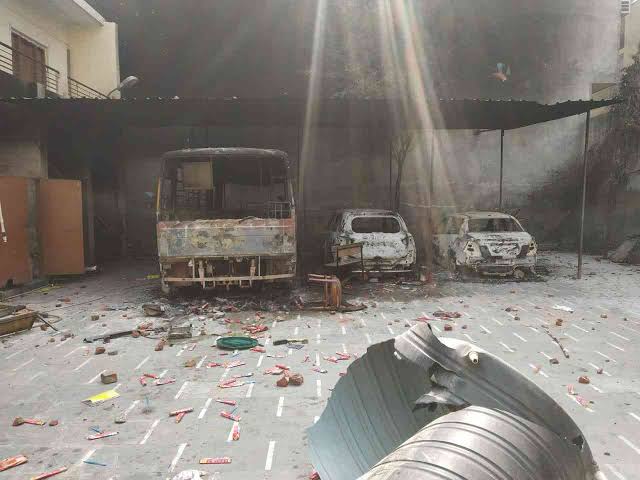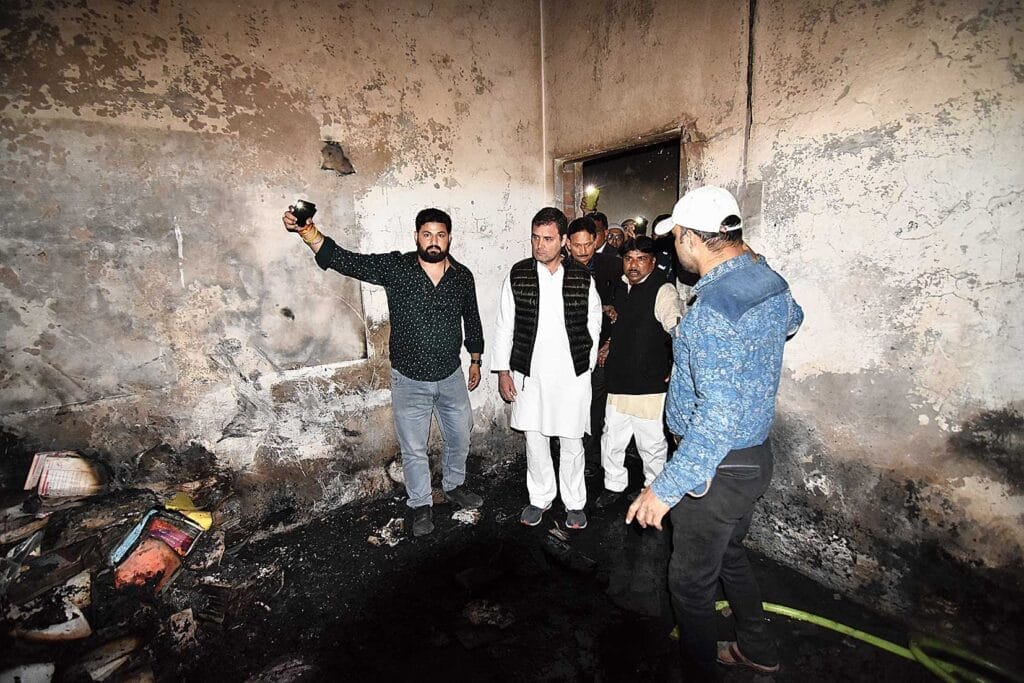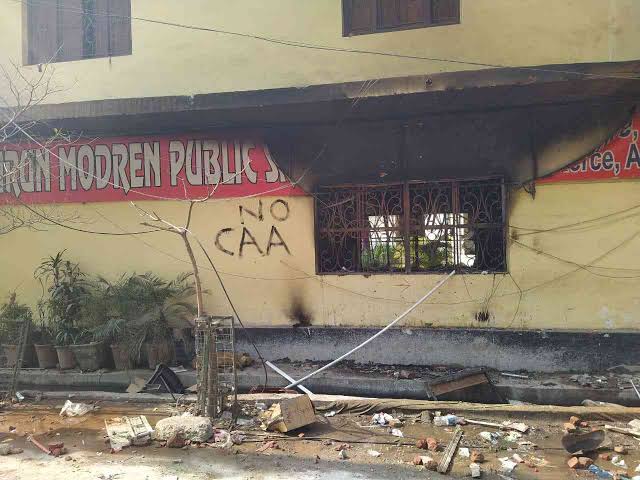Kakul Sharma was in class 8 in 2020 when the Delhi riots occurred. Although she was safe at home, her school was attacked by a mob. “I thought I would never be able to go back to school. We believed that the world was ending. My sister cried all day when she saw a news channel telecasting the rubble of our school.” For the children of Northeast Delhi, like Kakul, the riot meant a school blackened by smoke, a charred library, broken benches, and a playground that looked like it was hit by a tornado. This was the shape in which rioters left the Arun Modern Senior Secondary Public School on 25th February 2020.
The Delhi riots in 2020, started following an inflammatory speech by BJP leader Kapil Mishra against those protesting the CAA-NRC laws. The riots stretched to four days from the 23rd to the 27th of February. They killed 53 people and left hundreds injured. Apart from the carnage, it also razed to the ground 57 shops, 500 vehicles, six godowns, two schools, four factories and four religious places. This story is about the post-riot recovery, if any, of Kakul’s school.
Read more: Explained: Should you read the CAA in conjunction with the proposed NRC?

The loss
AMSSP School is situated in the middle of two neighbourhoods, Brijpur and Mustafabad. While both have a mixed religious population, Brijpur has a Hindu majority and Mustafabad has a Muslim majority. The rioters attacked the school with petrol bombs, lathis and bare hands. All records kept in the office from 1989 were burnt to ashes.
Achin Sharma, another student in class 12, explains how frantic he was after he saw the pictures of his school building turned smokey grey from brick red. “Our final exams were stopped midway. We sat for the remaining papers three months later, after the ground floor of the school was made hospitable. I became so afraid of going out of the house that my parents were planning to send me to a relative’s place in Indore. Principal Ma’am assured me that the school would be ready in a few months.”
The principal Jyoti Rani notes, “It took us more than three to five crore rupees to rebuild everything from scratch, classrooms of our top floor are still without gates”.
Inadequate compensation scheme
On February 27, 2020, the Delhi government’s Northeast Delhi Riots Claims Commission (NEDRCC) released an assistance scheme for riot victims. It announced, amongst other items, compensation worth 50% of the loss incurred to uninsured commercial property.
The scheme establishes three categories for compensating structural damage to houses: Rs 5,00,000 for total damage, Rs 2,50,000 for substantial damage, and Rs 15,000 for minor damage. To receive compensation, the victim has to submit an application form to the Sector Sub Divisional Magistrate who transfers the form to the SDM. Officials from the sub-divisional magistrate’s office and the public works department then make site visits and verify the application details.
Bhisma Sharma, the owner of the school, felt the process was smooth but was unhappy with the compensation amount. “We are saddened by the grossly inadequate amount of 5 lakhs, when the loss suffered has been worth 1.5-1.75 crores. No article in the rubble could be salvaged and kept aside for use,” he said.
The school has now filed a case in the Delhi High Court demanding full coverage from the government of the loss incurred by them. In fact, this is not an isolated instance; several riot survivors have approached the court for more compensation.
Elected representatives unresponsive
The school management holds the state apparatus responsible for prioritising the protection of the visiting American President over a carnage happening just a few kilometres away. Recounting the horrors of the day, Sharma says “The fire brigade could reach only after twelve hours, and we were most disappointed by the police who came a day later.”
Our elected representatives further disappointed the school authorities with hollow visits and silence. The MLA of the area, AAP leader Haji Yunus, remained largely unresponsive to the entire debacle of administration. The MP, Manoj Tiwari, a BJP leader, visited only some affected sites, the school not being one of them, and wrote a letter to the CM to deal with the victims in a non-partisan manner.

“The only important personality to visit the school was Congress leader Rahul Gandhi. He called in two days later, walked through the rubble of the school, delivered his sympathies and left with a never-fulfilled promise of whatever possible aid from his side,” says the principal.
Who were the rioters?
According to Bhisma Sharma, none of the rioters were from the localities around. This was not a case of neighbours turning against each other. The picture that formed in my mind was not of strife between a Muslim and a Hindu population, but of an enraged faceless mob versus a peaceful and diverse locality.
“Among the rioters all faces were new, they were people from someplace else. Only 10% of the crowd were people we knew. They were compelled to join the mobs to save their homes and shops from demolition,” added a security guard of the school, who did not wish to be named.
As Bhisma says, “जो कोई भी दंगा देख चुका है, वह कभी उसमें भाग नहीं लेगा (Anyone who has witnessed a riot will never want to participate in one).”

Recovery a distant dream
Almost four years have passed since the day and the school has recovered to a large extent, at least materially. The pandemic allowed the school time to rebuild, while studies continued online. But was it the same? No. Life in North East Delhi has changed forever.
Talking to Rani Mishra, mother of another student at AMSSPS, I caught a glimpse of their changed lives. There are apprehensions at every crossroad. With every new bill passed in parliament that accentuates the communal divide the parents of the school children turn hypervigilant. They double-check the social climate of the locality before sending their children to school. Before allowing their children to have sleepovers, they go through newspapers to rule out any signs of a possible uprising. The recovery has only been physical and not emotional, not structural.
The author is a member of the cohort of the Civic Journalism Training Programme, jointly hosted by Oorvani Foundation and Youth ki Awaaz. This article was produced as part of the programme.